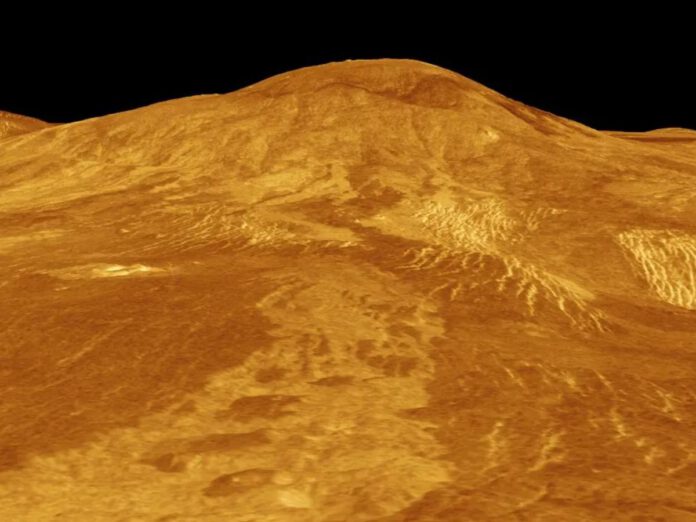
Ongoing Volcanic Activity on Venus Confirmed by Researchers
For the second time, researchers have found direct evidence that volcanoes are still erupting on Venus. This finding has been published in the journal Nature Astronomy. The researchers have based their claims on data collected during the Magellan mission.
The Magellan Mission
Understanding what happens on the surface of Venus is challenging due to its dense atmosphere which obscures visibility. However, the Magellan spacecraft, equipped with radar systems, surveyed approximately 98 percent of Venus’s surface between 1990 and 1992. Scientists have reexamined this radar data, comparing images from 1990 and 1992, and concluded that volcanic eruptions must have occurred in two regions during that time.
The Study Details
The researchers focused on the area around the Sif Mons volcano and the western part of the region known as Niobe Planitia. Previous indications of volcanic presence in Niobe Planitia suggested possible activity, but confirmation was lacking. The radar system aboard Magellan transmitted radio waves to these areas in both 1990 and 1992; the waves reflected off the surface and were captured again by the spacecraft. Analyzing these radar signals revealed that new rock appeared in 1992 that hadn’t been there in 1990, likely solidified magma from a recent eruption.
Significant Magma Deposits
The researchers estimate that between 3 to 20 meters of lava was deposited in both areas at the beginning of the 1990s. The Sif Mons volcano is believed to have created around 30 square kilometers of new rock, equivalent to filling 36,000 Olympic swimming pools. In Niobe Planitia, approximately 45 square kilometers of new rock was formed, enough to fill 54,000 Olympic pools. For comparison, Mauna Loa, the largest active volcano on Earth, released an amount of lava equivalent to around 100,000 Olympic pools in 2022.
Previous Research Findings
This is not the first time researchers have found direct evidence of volcanic activity on Venus. In 2023, scientists also used Magellan data to identify an active volcano near Venus’ equator. However, the newly discovered active volcanoes are located in entirely different regions. “Our results show that Venus is much more volcanically active than previously thought,” states researcher Davide Sulcanese.
Importance of These Findings
Understanding Venus’ volcanic activity provides essential insights into how its surface has been shaped and continues to renew itself. This information may also help explain why Venus, a planet similar in size, mass, and composition to Earth, looks so different from our planet today.
More detailed information about Venus’ current state is expected soon, as NASA is preparing a new mission named VERITAS. Scheduled for the next decade, VERITAS aims to re-examine Venus’ surface with more precise data. Scientists are eager to use VERITAS to revisit areas where eruptions occurred a few decades ago.











